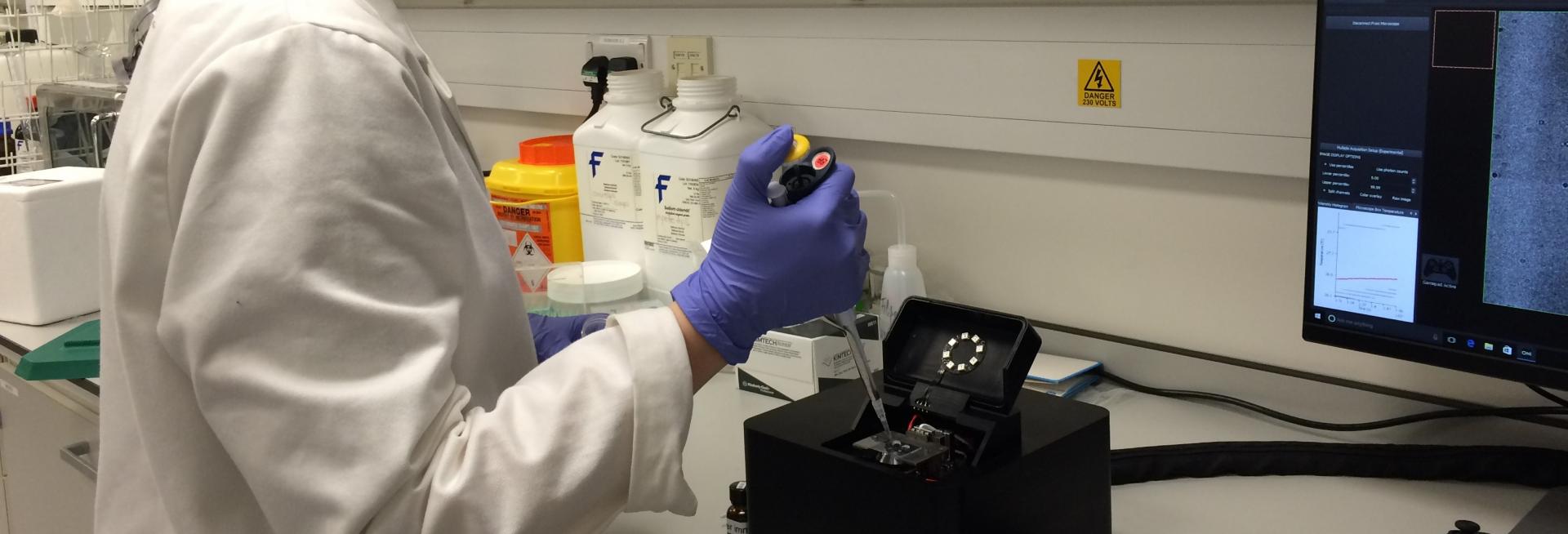From a physics lab to COVID-19 testing via spin-out success...
Processes such as drug discovery are often hit and miss: researchers may discover a molecule that treats a disease without really knowing how the drug works inside human cells. This makes it harder to learn lessons that could speed up the next big discovery. The arrival of ‘super-resolution’ microscopes that can see molecules interacting within cells are changing that.
With the formation of Oxford Nanoimaging (ONI), a spin-out from Oxford’s Department of Physics, Professor Achillefs Kapanidis and his team are revolutionising the future of the super-resolution microscope. Until recently, there were no microscopes at all that could view living processes at the molecular level. Conventional light-based microscopes rely on light waves being emitted off a surface – and when the object under the microscope is smaller than the wavelength of light, diffraction (interference) occurs and the object cannot be seen clearly. In the 2000s, two novel approaches to light-based microscopy managed to break the diffraction limit and to give birth to the era of ‘super-resolution imaging’; these advances won their inventors the 2014 Nobel Prize in Chemistry. But this specialised technology was still beyond the reach of most of those involved in fields such as biotechnology and drug discovery.
Super-resolution microscope
ONI has created the Nanoimager, a super-resolution microscope about the size of a shoebox – 30 times smaller and significantly cheaper than current alternatives. The microscope, which does not require specialist infrastructure, has been developed by an interdisciplinary team led by Professor Kapanidis and student Bo Jing. Using lasers and fluorescence techniques that can make individual molecules light up, the Nanoimager creates striking images, which can differentiate objects spaced as close as 20 nanometers, a distance about 200 times smaller than the length of an E. coli bacterium. Since it can watch reactions in real time, the microscope can also help to study how the tiny ‘biological machines’ within cells process biological structures and molecules like DNA. This capability makes it invaluable for screening new drug molecules or developing tiny biosensors that can detect pathogens and identify diseases.
Award winning innovation
ONI has grown rapidly to employ 100 people and expanded to the USA but still uses many UK parts, stimulating the local economy. ONI has recorded numerous microscope sales worldwide, including UK, US, Italy, Netherlands, Israel, Japan, Mexico, Australia and count companies such AstraZeneca as its customers. In recognition of this success, ONI won the Start-up of the Year award of the Institute of Physics and was chosen as a Fast-Track-100 company by The Sunday Times. Professor Kapanidis and Mr Jing also won the BBSRC Innovator of the Year award in 2019 in both the commercial and overall winner categories.
Furthermore, in response to the coronavirus pandemic, Prof Kapanidis teamed up with Dr Nicole Robb and student Nicolas Shiaelis to lead a multidisciplinary programme, including the local hospital to develop a rapid COVID-19 test. This combined their expertise in super resolution microscopy with machine learning and the technology is now being taken forward through the formation of a new spin-out company.
‘It is a very impactful tool to accelerate a drug discovery process.’
Dr Maria Flocco, AstraZeneca

